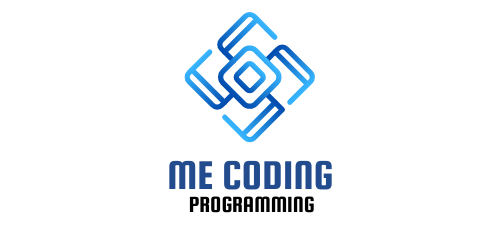JavaScript is an essential programming language in today’s digital landscape. It empowers developers to create interactive and dynamic web pages, build web applications, and enhance user experiences. However, many aspiring developers find JavaScript to be a challenging language to learn. In this article, we will explore the reasons why JavaScript can be difficult to grasp and provide strategies to overcome these challenges.
2. The Complex Nature of JavaScript
2.1 Syntax Challenges
JavaScript has a unique syntax compared to other programming languages. Novice learners may struggle with its peculiarities, such as semicolon usage, curly braces, and scoping rules. Additionally, understanding concepts like objects, arrays, and functions can be overwhelming for beginners.
2.2 Asynchronous Programming
Asynchronous programming is a fundamental aspect of JavaScript, allowing for non-blocking execution. However, it introduces complexities with concepts like callbacks, promises, and async/await. Asynchronous code can be challenging to reason about, especially for individuals new to programming.
2.3 Dynamic Typing
JavaScript is dynamically typed, meaning variables can hold values of any type. While this flexibility provides versatility, it can also lead to unexpected behaviors and errors. Understanding how JavaScript handles type coercion and implicit conversions is crucial to avoid potential pitfalls.
3. JavaScript’s Versatility and Ubiquity
3.1 Front-End Development
JavaScript is the backbone of modern front-end development. It enables interactivity, dynamic content, and responsive designs. Learning JavaScript is essential for crafting engaging user interfaces using frameworks like React, Angular, or Vue.js.
3.2 Back-End Development
JavaScript’s reach extends beyond the browser. With Node.js, developers can leverage JavaScript for server-side scripting, allowing them to build scalable and efficient back-end systems. Learning JavaScript opens the doors to full-stack development opportunities.
3.3 Full-Stack Development
Full-stack developers proficient in JavaScript possess a valuable skill set. By mastering both front-end and back-end technologies, they can create end-to-end solutions, ensuring seamless integration and improved performance.
4. Learning Resources for JavaScript
4.1 Online Tutorials and Documentation
Numerous online tutorials and comprehensive documentation exist to aid in learning JavaScript. Platforms like MDN Web Docs and W3Schools provide in-depth explanations, code samples, and interactive exercises for learners at all levels.
4.2 Interactive Coding Platforms
Interactive coding platforms, such as Codecademy and freeCodeCamp, offer hands-on learning experiences. These platforms provide a supportive environment where learners can practice JavaScript coding and receive instant feedback on their progress.
4.3 Community Support and Forums
Joining coding communities and forums dedicated to JavaScript can significantly enhance the learning process. Engaging with experienced developers, participating in discussions, and seeking help when faced with challenges can accelerate skill development.
5. Strategies to Overcome the Challenges
5.1 Break It Down
To tackle JavaScript’s complexity, break down the learning process into smaller, manageable chunks. Start with the basics of syntax, data types, and control structures before progressing to more advanced concepts. Mastering one concept at a time will build a solid foundation for future learning.
5.2 Practice, Practice, Practice
Practicing JavaScript regularly is crucial for retaining knowledge and improving coding skills. Engage in coding challenges, work on small projects, and experiment with different JavaScript libraries and frameworks. The more hands-on experience you gain, the more comfortable you will become with the language.
5.3 Join Coding Communities
Surrounding yourself with a supportive community of fellow learners and experienced developers can make the learning journey less daunting. Participate in coding meetups, join online forums, and collaborate on open-source projects. Learning from others and sharing experiences will accelerate your progress.
6. The Importance of JavaScript Proficiency
6.1 Career Opportunities
Proficiency in JavaScript opens up a wide range of career opportunities. From front-end development positions to full-stack roles, companies across various industries seek skilled JavaScript developers. Investing time and effort into learning JavaScript can lead to a rewarding and in-demand career.
6.2 Web Development Advancements
As technology continues to evolve, JavaScript remains at the forefront of web development advancements. Staying up to date with the latest JavaScript frameworks, libraries, and best practices ensures that developers can create cutting-edge web applications and stay competitive in the industry.
7. Conclusion
Learning JavaScript can be challenging due to its complex nature, syntax challenges, asynchronous programming, and dynamic typing. However, by leveraging the abundance of learning resources available, adopting effective learning strategies, and immersing oneself in coding communities, mastering JavaScript is within reach. The effort invested in learning JavaScript pays off with diverse career opportunities and the ability to contribute to exciting web development projects.
8. FAQs
- Q: How long does it take to learn JavaScript?
- A: The time required to learn JavaScript depends on various factors, including prior programming experience, dedication to learning, and the complexity of the projects you aim to undertake. Generally, it takes several months of consistent practice to gain proficiency.
- Q: Are there any prerequisites for learning JavaScript?
- A: While prior programming experience can be beneficial, JavaScript can be learned by beginners as well. Having a basic understanding of HTML and CSS is helpful, but not mandatory.
- Q: What are some popular JavaScript frameworks?
- A: Some popular JavaScript frameworks include React, Angular, and Vue.js. These frameworks simplify the development of interactive user interfaces and enhance productivity.
- Q: Is JavaScript only used for web development?
- A: While JavaScript is primarily associated with web development, it has expanded its reach. With Node.js, JavaScript can be used for server-side scripting, command-line tools, and desktop applications.
- Q: How can I overcome frustration while learning JavaScript?
- A: Learning any programming language can be frustrating at times. Take breaks when needed, seek help from coding communities, and celebrate small victories along the way. Remember that perseverance is key to overcoming challenges.

